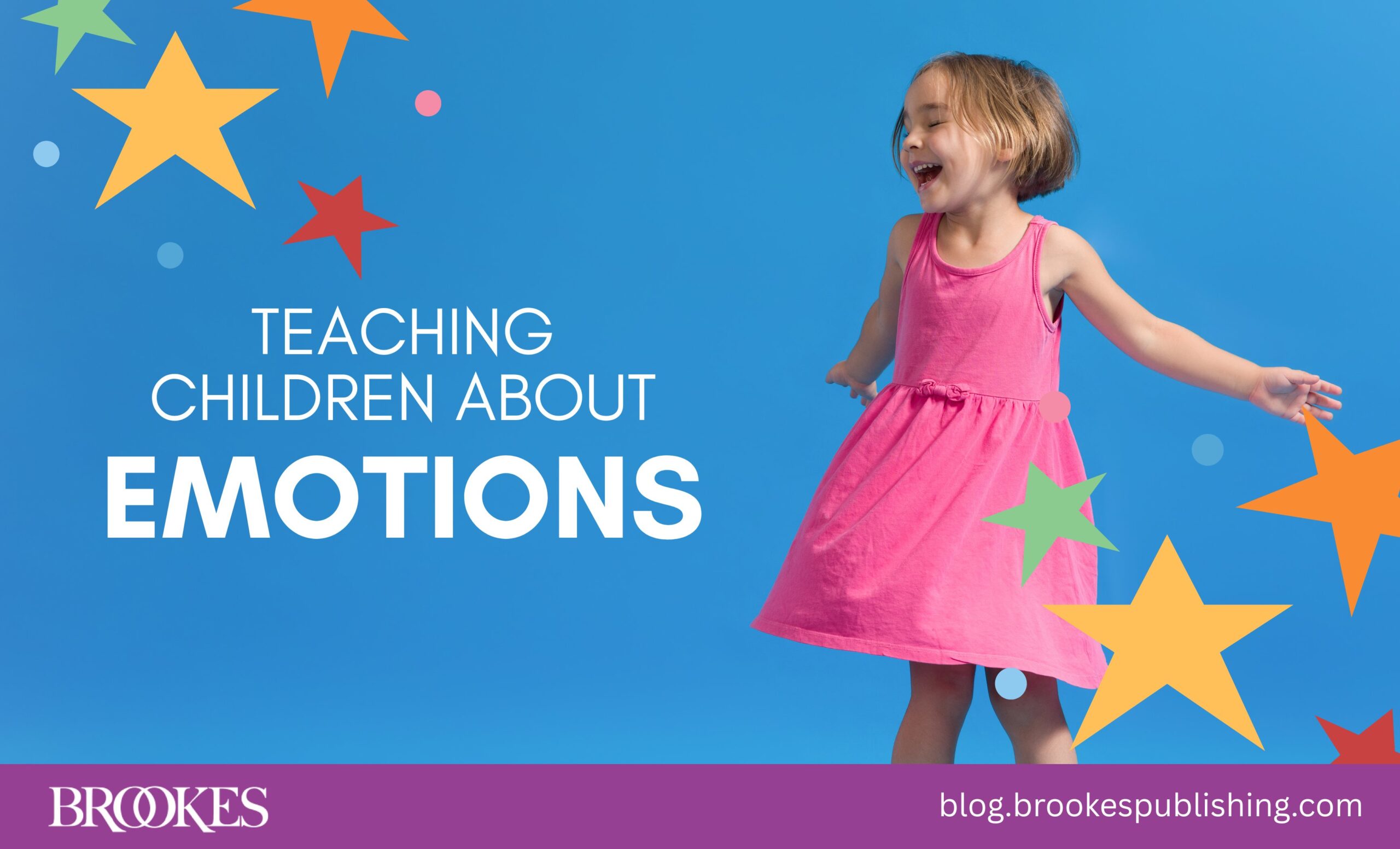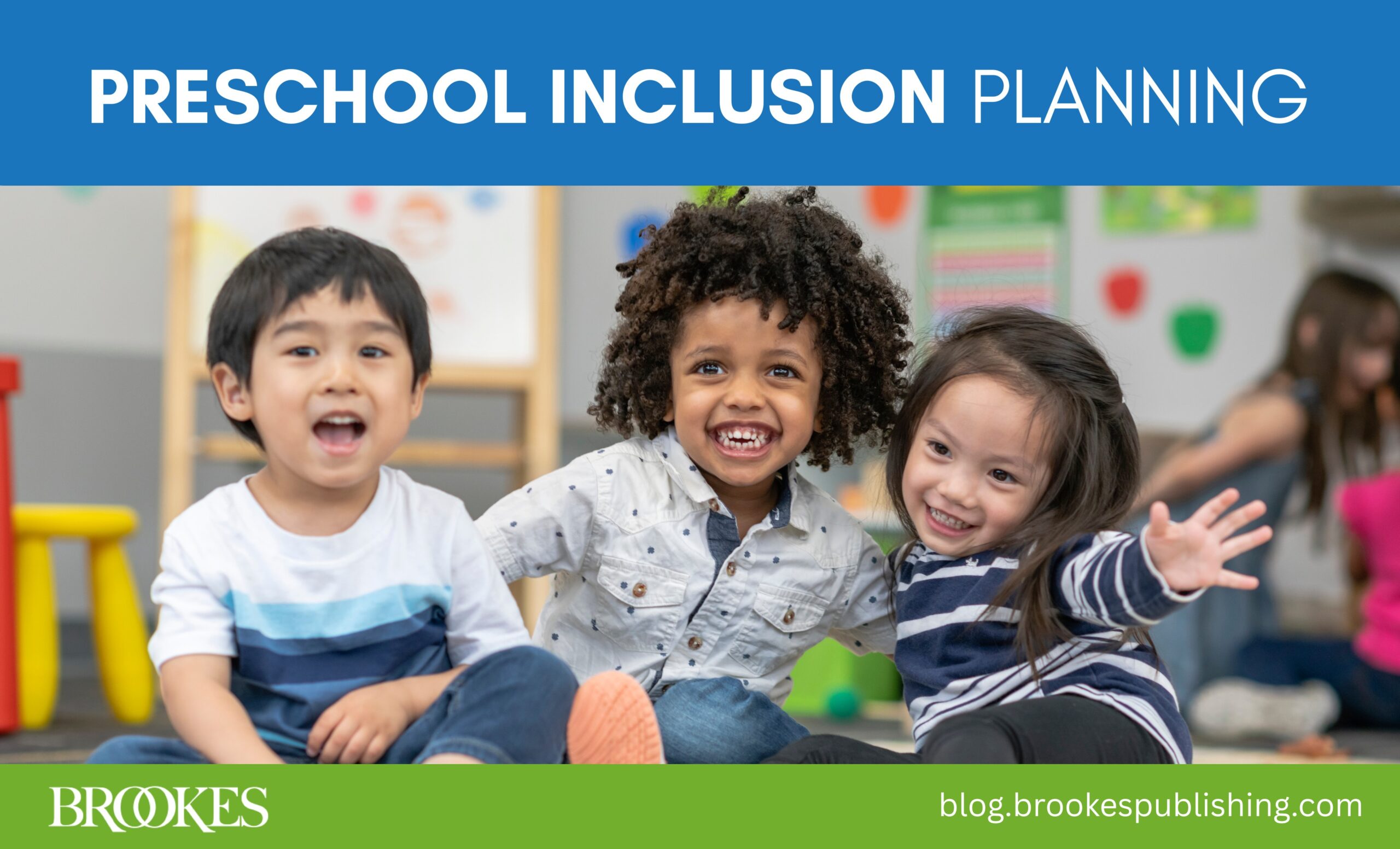12 Key Practices for High-Quality Early Childhood Inclusion
February 20, 2018
 Which inclusive practices do early childhood programs need to master in order to welcome and support all learners? In today’s blog post, we’ll take you through the 12 inclusive practices with the strongest research base for supporting young children in inclusive programs.
Which inclusive practices do early childhood programs need to master in order to welcome and support all learners? In today’s blog post, we’ll take you through the 12 inclusive practices with the strongest research base for supporting young children in inclusive programs.
Where did these practices “come from”? They’re the core of the Inclusive Classroom Profile (ICP™), a field-tested observational tool for classrooms serving children ages 2-5. Today’s post, excerpted and adapted from the ICP manual, introduces you to all 12 practices and gives you real-world classroom examples. You’ll see how each key practice–from conflict resolution to transitions between activities–contributes to successful, high-quality inclusion in an early education classroom.
Adaptations of Space, Materials, and Equipment
What it looks like:
- Children with and without disabilities can gain access to the physical space, materials, and equipment.
- When needed, children are helped to gain access to and use materials in meaningful ways through adult scaffolding strategies.
- The teacher and assistants set up the classroom areas and materials in ways that can be accessible to all children, but they dynamically organize the physical space, equipment, and materials to intentionally encourage children’s independence and social interactions.
Example:
Preschool teacher Kelly saw Tara, a 4-year-old child with cerebral palsy, use her walker to walk from the block corner toward the art area during free playtime. Kelly intentionally prompted Tara’s peers at the block corner to clear the alley next to the corner by removing some toys so that Tara could independently gain access to the space.
Adult Involvement in Peer Interactions
What it looks like:
- The classroom has opportunities for children to participate in activities and routines with their peers.
- Adults plan and implement daily social play and learning activities.
- There’s a good balance between adult involvement and support for children’s spontaneous social engagements.
- Adults facilitate problem solving between children.
- Adults provide scaffolding strategies for supporting positive, reciprocal, sustained peer interactions and relationships between children.
Example:
Peter is a 3-year-old boy who is nonverbal and has a developmental delay. During circle time, teacher Kelly invited another student, Andrew, to model for Peter the movements of a song he likes to perform with his peers. Watching Andrew use his hands to form the movements of the song was an effective way to help Peter imitate, learn, and perform the song movements independently.
Adults’ Guidance of Children’s Free-Choice Activities and Play
What it looks like:
- Adults show enjoyment and availability when engaging with children during activities and play.
- Children have many opportunities to decide on activities, playmates, and play topics that they like during free-choice activity.
- Children are given many opportunities to make choices during activities and playtime.
- Adults observe children’s engagement in play and consistently support play using individualized strategies such as verbal/nonverbal prompting, modeling, commenting/asking questions, and enlisting other peers.
Example:
Kelly joined Martha, a 4-year-old girl who was recently diagnosed with autism, during free-choice time. Kelly used a visual activity organizer in the role-play area to help Martha act out the steps involved in cooking a meal for her friends.
Conflict Resolution
What it looks like:
- Adults have set clear rules and behavioral expectations that are consistently communicated to children to encourage positive social behavior and prevent conflicts.
- When children have difficulty resolving their differences on their own, adults join children to listen to all children’s perspectives, acknowledging their views and feelings.
- Adults try to focus on helping children find more positive ways for negotiating their differences.
- Individualized strategies are used to help children negotiate peer conflict and generate solutions.
Example:
Kelly observed two children on the playground fighting over a new toy. She invited the two children to consider more positive ways they could both enjoy the new toy. One of the two children involved in the conflict had a communication difficulty in expressive language, so Kelly invited the children to look at some visuals that depicted possible alternative solutions. With Kelly’s facilitation, the two children decided to take turns using the new toy by paying attention to an alarm clock that would indicate when to pass the toy to each other.
Membership
What it looks like:
- Adults work together to create a classroom community to which all children feel that they belong, regardless of their individual differences.
- Adults develop a sense of belonging by planning activities and creating opportunities to help children understand and accept individual differences.
- Opportunities exist for children to assume equal roles and responsibilities in the classroom.
- Adults intervene to prevent bullying or persistent teasing between children in the classroom.
- Adults use positive and inclusive strategies for responding to children’s individual differences.
Example:
When a child asked Kelly why another child was using a different type of spoon during snack time, Kelly responded that children can use different spoons as they grow and learn to eat different foods. She showed all the children the many sizes of spoons she had available for their use. Kelly showed examples of how younger children might need bigger or softer spoons and demonstrated how some spoons might be easier for some children to hold.
Relationships between Adults and Children
What it looks like:
- Adults seek many opportunities during the day to engage in social interactions that are positive, reciprocal, and sustained. They show enjoyment when interacting with the children.
- Adults are highly responsive to children’s interests as well as their emotional needs.
- Adults use visual supports and additional classroom resources for supporting children’s emotional needs and development.
Example:
When 4-year-old Charlie seemed reluctant to play outside because of the thunder he had heard earlier in the morning, Kelly read a picture book with Charlie about thunderstorms. When they finished reading the book, Kelly modeled for Charlie all the different things he could do if he felt uncomfortable while being outside on the playground. Kelly’s shared reading activity and follow-up conversation helped Charlie feel better and encouraged him to join his peers on the playground.
Support for Communication
What it looks like:
- Adults are responsive to children’s initiated communication.
- Adults actively facilitate social-communication with children using a variety of scaffolding strategies, including alternative means of communication systems.
- Visual supports, books, and classroom resources are used to support social-communication.
- Adults intentionally use alternative means of communication systems in ways that enable children to communicate and participate in classroom activities with their peers.
Example:
Kelly showed Martha, the helper of the day, how to use picture symbols of available snacks to help Andy, a boy with a communication difficulty, choose his snack. As Martha went around the table verbally asking each child to make a choice between two snacks, she used two picture cards to help Andy make his choice.
Adaptation of Group Activities
What it looks like:
- Children have opportunities to participate with their peers in planned whole-group and small-group activities.
- Adults use embedded strategies and adaptations of activities to support children’s active engagement and participation while also meeting children’s individual needs.
- Adults plan and monitor embedded strategies and adaptations to support children’s needs and adjust activities as needed to encourage participation of all children in the group.
Example:
During a small-group art activity in which children were using paintbrushes to paint leaves they collected outdoors, Kelly provided hand-over-hand assistance for Louisa, a child with a fine motor coordination difficulty, to fingerpaint her leaves. The second part of the activity involved cutting through paper to form different shapes, and Louisa worked on one of her individualized goals that involved sorting out different shapes alongside her peers.
Transitions between Activities
What it looks like:
- Adults share responsibilities and flexibly adjust their roles to prepare for daily activities and promote smooth transitions.
- Adults collaborate to plan activities and supports for the whole group to ensure smooth transitions.
- Specific, individualized strategies (such as visual supports) are used for children who experience greater difficulty making the transition between activities.
Example:
Kelly uses a soft musical tune to signal the end of transitions with the whole group. Sam, however, requires additional support to transition between activities. Kelly and her coteacher created a picture schedule to go through with Sam, who finds it very helpful to look at the visual symbols of upcoming activities before the end of each routine.
Feedback
What it looks like:
- Adults give children sensitive, positive feedback (verbal and nonverbal) on their efforts, behaviors, and learning.
- Adults use different types of feedback (e.g., corrective feedback, positive reinforcement) to support important goals (e.g., positive behavior, learning, engagement).
- Adults frequently use feedback that focuses on children’s efforts and the process of doing things rather than solely on their end products.
Example:
Kelly observed Chris, a boy with a developmental delay, working hard to solve a number puzzle during free playtime. Kelly asked him how he was trying to figure out how to put the pieces together. When Chris explained his strategy, Kelly said, “I can see you’re working very hard and your strategy seems very helpful.” Kelly invited Chris to share his strategy with his peers during circle time.
Family-Professional Partnerships
What it looks like:
- Procedures are implemented daily for encouraging bidirectional communication with families about children’s individualized education programs and progress.
- Staff are encouraged to participate in meetings with families.
- Families have opportunities to contribute information on their priorities.
- Families are invited to provide feedback on the quality of the program.
Example:
Each child has a communication book in which families and teachers can exchange daily messages, including private notes. Kelly also uses e-mail daily to communicate with families. At the end of each day, classroom staff post messages about the day’s activities and children’s experiences on a white board outside the classroom to share with families. Kelly’s program also provides support for staff to attend intervention planning meetings with service providers and families.
To exchange information on children’s progress with families, the program actively encourages families to participate regularly in progress meetings and shares reports of children’s progress that are parent friendly and sensitive to the cultural and linguistic diversity of families. Kelly’s program also uses a system for identifying family priorities, concerns, and resources to assist with meeting children’s needs.
Monitoring Children’s Learning
What it looks like:
- The program uses multiple assessment methods for monitoring children’s progress on individual goals.
- The program uses a combination of research-based formative assessment tools, observation notes, behavioral assessment checklists, and various other teacher-made assessment tools.
- An individualized intervention plan for each child is developed based on identified needs and specifies how interventions and supports can be embedded into classroom activities.
- All classroom staff have access to assessments, intervention plans, and progress reports from specialized therapists, and they use information for their own planning.
- Planning includes interventions that support children’s needs in their home and community.
- Progress monitoring data is used to adjust interventions and instruction.
Example:
Kelly was keeping a running record of Maya’s participation during storytime to monitor her engagement following a recent embedded activity they had started implementing a few weeks ago to support her understanding of story facts. In her notes, Kelly recorded that Maya found it helpful to use story props to act out the story prior to and during retelling a story. She also noted that Maya might need more frequent prompting by an adult to help her connect the events of a story.
***
LEARN MORE
 Like today’s post? Learn more about how to measure the 12 key inclusion practices with the Inclusive Classroom Profile (ICP™) by Elena P. Soukakou, Ph.D. It’s a great tool for assessing your program’s current inclusive practices, establishing a baseline for measuring future progress, and guiding your program’s future quality improvement efforts. Here you can watch a webinar, download a case study and excerpt, and more:
Like today’s post? Learn more about how to measure the 12 key inclusion practices with the Inclusive Classroom Profile (ICP™) by Elena P. Soukakou, Ph.D. It’s a great tool for assessing your program’s current inclusive practices, establishing a baseline for measuring future progress, and guiding your program’s future quality improvement efforts. Here you can watch a webinar, download a case study and excerpt, and more:




Write a Comment
Your email address will not be published. Required fields are marked *
comments
Emma Coles says
High-quality early childhood programs form the foundation for high-quality inclusive programs from which all children benefit.
Post a Comment